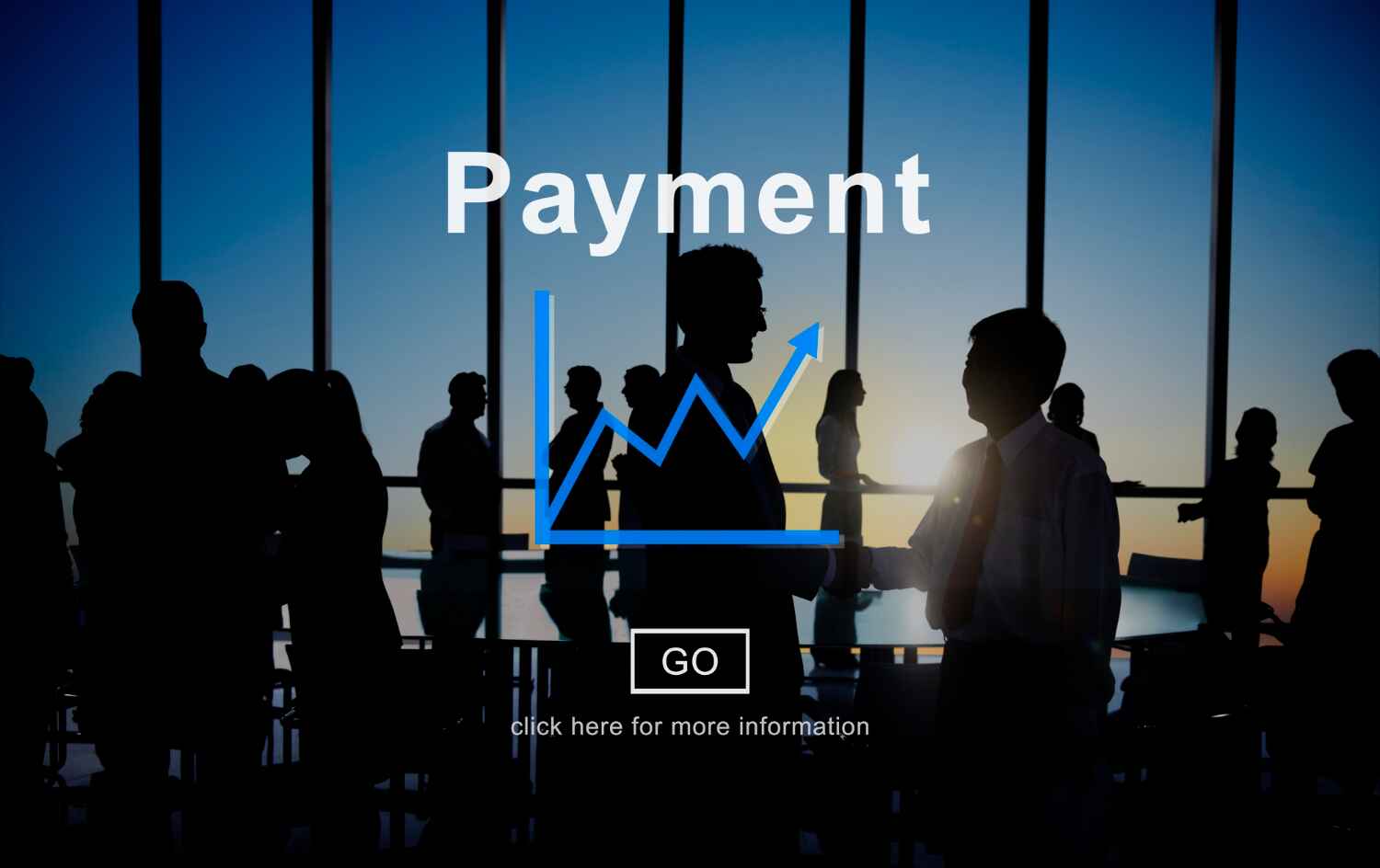where technology increasingly simplifies our daily lives, electronic toll collection systems have emerged as a pivotal innovation in the realm of transportation. Among these systems, PayByPlateMA stands out as a noteworthy example. This system, implemented by the Massachusetts Department of Transportation (MassDOT), is designed to streamline the process of toll collection on highways and roads throughout the state.
PayByPlateMA represents a significant advancement in how tolls are managed and collected. Unlike traditional toll booths where drivers must stop and pay with cash or credit cards, PayByPlateMA leverages license plate recognition technology to automatically process tolls. This system eliminates the need for physical toll booths, thus reducing traffic congestion and enhancing the efficiency of travel.
The importance of electronic toll collection systems like paybyplatema cannot be overstated. They offer a range of benefits, including reduced wait times at toll plazas, minimized air pollution from idling vehicles, and a more seamless travel experience. These systems are not only more convenient for drivers but also more cost-effective for transportation agencies, which can focus resources on road maintenance and improvements rather than toll collection infrastructure.
This article aims to provide a comprehensive understanding of PayByPlateMA. We will explore how the system works, its benefits, and how it compares to traditional toll collection methods. Additionally, we will guide you through the process of registering for PayByPlateMA, address common issues users might encounter, and discuss future developments. By the end of this article, you’ll have a clear grasp of PayByPlateMA’s role in modern toll collection and how it can enhance your travel experience.
What is PayByPlateMA?
PayByPlateMA is Massachusetts’ advanced electronic toll collection system designed to simplify and modernize the way tolls are collected on the state’s highways and roads. Developed by the Massachusetts Department of Transportation (MassDOT), this system uses cutting-edge technology to automate toll collection, aiming to improve traffic flow and reduce congestion.
Description of the System
At its core, PayByPlateMA operates using license plate recognition technology. When a vehicle passes through a toll area, high-resolution cameras capture an image of its license plate. This information is then used to identify the vehicle and determine the appropriate toll. The system is linked to an account that can be pre-funded or billed after the tolls are incurred. Drivers are billed based on their license plate details, eliminating the need for manual toll payments at traditional booths.
How It Fits Into the Broader Context of Toll Collection
PayByPlateMA is part of a broader trend towards electronic toll collection systems, which have been adopted globally to improve the efficiency and convenience of toll roads. Traditional toll collection methods often involve physical toll booths where drivers must stop to pay, leading to traffic delays and increased vehicle emissions from idling. By contrast, electronic systems like PayByPlateMA streamline the process, allowing for continuous travel and reducing bottlenecks at toll plazas.
In the context of toll collection, PayByPlateMA aligns with the movement towards cashless and contactless payment methods. It integrates with other electronic tolling systems and supports interoperability, which means that it can work in conjunction with similar systems in other regions, facilitating smoother travel across different states and toll jurisdictions.
Overview of Its Features and Benefits
Features:
- Automatic Toll Collection: PayByPlateMA uses license plate recognition to automatically identify vehicles and process tolls without requiring drivers to stop.
- Flexible Payment Options: Users can choose to prepay for tolls or receive a bill based on their toll usage. The system provides various payment methods, including online and mail options.
- No Need for Transponders: Unlike some electronic toll systems that require a transponder or tag, PayByPlateMA only needs a registered vehicle plate, making it simpler for users.
Benefits:
- Reduced Congestion: By eliminating the need for stopping at toll booths, PayByPlateMA reduces traffic congestion and delays at toll plazas.
- Enhanced Convenience: Drivers enjoy a seamless travel experience with automatic toll processing and minimal interaction required.
- Environmental Impact: Reduced idling at toll booths contributes to lower vehicle emissions, benefiting the environment.
- Operational Efficiency: For transportation authorities, the system reduces the need for physical infrastructure and operational costs associated with traditional toll collection.
How PayByPlateMA Works
Understanding how PayByPlateMA operates involves exploring its underlying technology, the process users follow, and the scope of its coverage. This system exemplifies the integration of modern technology to enhance toll collection efficiency and convenience.
Explanation of the Technology Behind PayByPlateMA
At the heart of PayByPlateMA is license plate recognition technology. This involves several key components:
- High-Resolution Cameras: These are strategically placed at toll points to capture clear images of vehicle license plates. The cameras are equipped with advanced imaging technology to ensure accurate plate recognition even at high speeds or in varying weather conditions.
- Optical Character Recognition (OCR): The captured images are processed using OCR software, which converts the visual information of the license plate into digital data. This step ensures that the system can read and interpret the license plate numbers accurately.
- Automated Billing System: Once the license plate number is captured and processed, it is matched with a database of registered vehicles. The system calculates the appropriate toll based on the vehicle’s category and the distance traveled. The toll is then billed to the vehicle owner’s registered account.
- Integration with Payment Systems: PayByPlateMA interfaces with various payment methods, allowing users to prepay or receive a post-travel bill. The system supports online payments, mail-in payments, and other convenient options.
Steps Involved in Using the System
Using PayByPlateMA is straightforward and involves the following steps:
- Vehicle Registration: To use PayByPlateMA, vehicle owners must register their vehicles on the PayByPlateMA website or through designated service centers. During registration, they provide vehicle details, license plate information, and payment preferences.
- Travel Through Toll Points: As a vehicle approaches a toll point, high-resolution cameras capture the license plate number. No action is required from the driver at this stage, as the system operates automatically.
- Toll Calculation and Billing: After the vehicle passes through the toll point, the system calculates the toll based on the vehicle’s category and the tolling zone. The toll amount is then billed according to the user’s payment preferences—either through a pre-funded account or via a post-travel invoice.
- Payment: If the user has a prepaid account, the toll amount is automatically deducted. For those who receive a bill, payment can be made online, by mail, or through other available methods.
- Account Management: Users can manage their accounts online, view transaction history, update payment methods, and track toll charges through the PayByPlateMA website or mobile app.
Types of Vehicles and Tolls Covered
PayByPlateMA covers a broad range of vehicle types and toll scenarios, including:
- Passenger Vehicles: Standard cars and SUVs are included in the system, with tolls calculated based on vehicle size and type.
- Commercial Vehicles: Trucks, buses, and other commercial vehicles are also covered. Tolls for these vehicles may vary based on their size, weight, and the type of road they use.
- Motorcycles: Motorcycles are treated differently from passenger vehicles in terms of toll calculation, often resulting in lower toll rates.
- Toll Zones: The system covers various toll zones, including highways, bridges, and tunnels within Massachusetts. Each zone may have different toll rates based on the distance traveled and the type of vehicle.
Benefits of Using PayByPlateMA

PayByPlateMA brings several advantages that enhance both the driving experience and the efficiency of toll collection.
Convenience and Efficiency
One of the most significant benefits of PayByPlateMA is the convenience it offers to drivers. Traditional toll booths require vehicles to stop, which can lead to delays and disrupt the flow of traffic. PayByPlateMA, on the other hand, uses license plate recognition technology to automatically process tolls as vehicles pass through toll points. This means drivers don’t need to stop or interact with toll booth operators, streamlining the tolling process and making it much more efficient.
The system is designed for ease of use. Once registered, drivers simply go about their journey without worrying about cash or transponders. Toll charges are automatically billed based on the vehicle’s license plate, and users can manage their accounts online or via a mobile app. This seamless integration into daily travel routines eliminates the need for manual toll payments and reduces the hassle associated with traditional toll collection methods.
Reduction in Traffic Congestion
Traffic congestion at toll booths is a common issue, especially during peak travel times. Vehicles must slow down or stop to pay tolls, leading to bottlenecks and delays. PayByPlateMA addresses this problem by eliminating the need for physical toll booths and reducing the time vehicles spend at toll points.
With PayByPlateMA, the flow of traffic is continuous. The system’s automatic processing means that vehicles can pass through toll zones without interruption, leading to smoother and faster travel. This reduction in congestion not only improves the driving experience but also enhances overall road safety by minimizing the risk of accidents caused by sudden stops or slow-moving traffic.
Cost Savings and Time Management
The efficiency of PayByPlateMA translates into significant cost savings for both drivers and transportation authorities. For drivers, the elimination of toll booth stops means reduced fuel consumption and lower vehicle maintenance costs. Vehicles that don’t need to idle or accelerate frequently are less likely to experience engine wear and tear, leading to longer-lasting vehicles and savings on repairs.
For transportation authorities, the cost savings come from reduced infrastructure needs and lower operational expenses. Maintaining toll booths and staffing them requires substantial resources. By shifting to an electronic system, agencies can lower these costs and redirect funds towards road maintenance and improvements. Additionally, the system’s ability to handle toll transactions efficiently reduces the need for manual processing and administrative work.
In terms of time management, PayByPlateMA saves drivers valuable time by eliminating the need to stop and pay at toll booths. This not only shortens travel times but also reduces the stress associated with navigating toll plazas, contributing to a more pleasant driving experience.
How to Register for PayByPlateMA
Registering for PayByPlateMA is a straightforward process designed to make toll management easier for drivers. Below is a step-by-step guide to help you through the registration process, along with the information and documents you’ll need, and tips on managing your account.
Step-by-Step Guide to Registration
- Visit the PayByPlateMA Website:
- Go to the official www.paybyplatema.com website. This is where you will start the registration process and access all necessary forms and instructions.
- Create an Account:
- You will be prompted to create a user account by providing a valid email address and creating a password.
- Provide Vehicle Information:
- Enter the details of the vehicle(s) you want to register. Ensure that this information is accurate to avoid any issues with toll processing.
- Add Payment Information:
- Enter your preferred payment method. PayByPlateMA offers several options, including credit/debit cards and bank accounts for automatic billing. You can also choose to prepay for tolls or opt for post-travel billing.
- Review and Confirm:
- Confirm your registration by agreeing to the terms and conditions and submitting your information.
- Receive Confirmation:
- Once your registration is processed, you will receive a confirmation email with details about your account. This email will include a summary of your registered vehicle(s) and payment method.
- Start Using the System:
- Your registration is complete, and you can now use PayByPlateMA. The system will automatically start tracking your tolls based on your license plate information.
Required Information and Documents
To complete the registration process, you’ll need the following information and documents:
- Vehicle Information: Including the make, model, year, and license plate number of each vehicle you wish to register.
- Personal Information: Such as your name, address, and contact details.
- Payment Information: Credit or debit card details, or bank account information for billing purposes.
- Driver’s License: Some jurisdictions may require a valid driver’s license as part of the registration process.
Ensure that all provided information is accurate and up-to-date to avoid any issues with toll processing or account management.
How to Manage Your Account
Managing your PayByPlateMA account is easy and can be done through the website or mobile app. Here’s how:
- Log In:
- Access your account by logging in with your registered email address and password on the PayByPlateMA website or mobile app.
- View and Update Vehicle Information:
- You can add new vehicles, update existing vehicle details, or remove vehicles that are no longer in use from your account profile.
- Check Account Balance and Transactions:
- Monitor your account balance, view recent toll transactions, and check your payment history. This helps you keep track of toll costs and ensure that your account is up-to-date.
- Manage Payment Methods:
- Update your payment information, including adding or changing credit/debit cards and bank account details. You can also set up automatic payments or adjust your billing preferences.
- Review Statements and Bills:
- Access and review your toll statements and bills. You can view detailed summaries of your toll charges and manage any outstanding payments.
- Contact Customer Support:
- If you encounter any issues or have questions about your account, you can contact PayByPlateMA customer support through the contact options provided on the website or app.
PayByPlateMA vs. Traditional Toll Systems
As electronic toll collection systems like PayByPlateMA become more prevalent, comparing them to traditional toll systems reveals notable differences in efficiency, convenience, and overall impact. Here’s a detailed comparison of electronic toll collection versus traditional toll booths, including the advantages and disadvantages of each system and their effects on drivers and toll authorities.
Comparison of Electronic Toll Collection vs. Traditional Toll Booths
1. Collection Method:
- Electronic Toll Collection (ETC): Systems like PayByPlateMA use automatic license plate recognition to capture vehicle information and process toll payments without requiring vehicles to stop. The system automatically bills the registered vehicle owner based on their license plate data.
- Traditional Toll Booths: Drivers stop at toll booths to pay with cash or card. This method requires manual interaction with toll collectors or self-service machines, leading to potential delays and congestion.
2. Traffic Flow:
- ETC: Electronic toll systems allow for continuous traffic flow as vehicles pass through toll points without stopping. This minimizes bottlenecks and reduces traffic congestion.
- Traditional Toll Booths: Toll booths often cause delays due to the need for vehicles to stop, pay, and then resume driving. This can lead to traffic jams and increased travel times, especially during peak hours.
3. Infrastructure:
- ETC: Requires infrastructure such as cameras and sensors for license plate recognition. There’s no need for physical toll booths, which can reduce the overall footprint and maintenance costs.
- Traditional Toll Booths: Require physical structures, staffing, and maintenance. This infrastructure can be expensive to build and maintain, and it takes up valuable road space.
Advantages and Disadvantages of Each System
Electronic Toll Collection (e.g., PayByPlateMA):
Advantages:
- Increased Efficiency: Vehicles do not need to stop, leading to smoother traffic flow and reduced congestion at toll points.
- Convenience: Drivers do not need to handle cash or cards at toll booths, and tolls are processed automatically.
- Reduced Environmental Impact: Less idling at toll booths means lower vehicle emissions and reduced environmental impact.
- Cost Savings for Authorities: Fewer physical structures and staff are needed, which can reduce operational costs.
Disadvantages:
- Initial Setup Costs: Implementing an electronic toll system can be costly due to technology and infrastructure investments.
- Technology Dependence: System reliability is crucial. Technical issues with cameras or software can impact toll collection.
- Privacy Concerns: Automated license plate recognition raises privacy issues as vehicle data is collected and stored.
Traditional Toll Booths:
Advantages:
- Immediate Interaction: Drivers have a direct interaction with toll collectors, which can be reassuring for those preferring a personal touch.
- Familiarity: Many drivers are accustomed to the traditional method and might find it simpler or more straightforward.
Disadvantages:
- Traffic Delays: Stopping at toll booths causes delays and congestion, which can lead to longer travel times.
- Higher Operational Costs: Maintaining physical toll booths requires ongoing expenses for staffing and infrastructure.
- Environmental Impact: Vehicles idling at toll booths contribute to increased emissions and environmental pollution.
Impact on Drivers and Toll Authorities
For Drivers:
- Electronic Toll Collection: Drivers benefit from a smoother, more efficient travel experience with fewer delays. The convenience of automatic billing and reduced need for physical payment methods enhances overall satisfaction. However, some drivers may have concerns about privacy and the need for technology reliability.
- Traditional Toll Booths: While providing a familiar and straightforward payment process, traditional toll booths can frustrate drivers due to traffic delays and potential congestion. The need to stop and interact can be inconvenient and time-consuming.
For Toll Authorities:
- Electronic Toll Collection: Authorities benefit from lower operational costs and reduced need for physical infrastructure. The system allows for more efficient toll collection and better resource allocation. However, they must invest in technology and address any technical issues that arise.
- Traditional Toll Booths: While providing a direct method of toll collection, traditional booths require significant resources for construction, staffing, and maintenance. Managing traffic flow and addressing congestion issues can be challenging.
Common Issues and Troubleshooting
While PayByPlateMA is designed to offer a seamless toll collection experience, users may encounter occasional issues. Here’s a guide to common problems and how to resolve them, as well as information on customer support.
Common Problems Users Might Face
- Incorrect Toll Charges:
- Issue: Users may notice discrepancies in their toll charges, such as being billed for the wrong amount or for a toll that wasn’t used.
- Cause: This could result from errors in license plate recognition, incorrect vehicle information, or issues with the billing system.
- Account Login Issues:
- Issue: Difficulty logging into the PayByPlateMA account due to forgotten passwords or account lockouts.
- Cause: Incorrect login credentials or security measures that temporarily lock the account after multiple failed login attempts.
- Payment Processing Errors:
- Issue: Problems with payment transactions, such as payments not being processed or deducted from the account.
- Cause: Issues with the payment method on file, technical glitches in the payment gateway, or insufficient funds.
- License Plate Recognition Problems:
- Issue: Vehicles experiencing trouble with license plate recognition, leading to missed toll charges or inaccurate billing.
- Cause: Dirty or obscured license plates, poor camera angles, or technical faults with the recognition system.
How to Resolve Issues with Account Management, Payments, or Technology
- Incorrect Toll Charges:
- Resolution: Review your toll transaction history through the PayByPlateMA account portal. If discrepancies persist, contact customer support with details of the issue.
- Account Login Issues:
- Resolution: Use the “Forgot Password” option on the login page to reset your password. If the account is locked, follow the instructions provided or contact customer support for assistance.
- Payment Processing Errors:
- Resolution: Verify that your payment method is up-to-date and has sufficient funds. Check for any technical issues with the payment gateway and retry the transaction. If problems continue, reach out to customer support for help.
- License Plate Recognition Problems:
- Resolution: Ensure your license plate is clean and clearly visible. If issues persist, report them to customer support, who can check the camera system and update any records as needed.
Contact Information for Customer Support
For any unresolved issues or further assistance, you can contact PayByPlateMA customer support through the following methods:
- Phone: Call the customer support hotline at [Insert Phone Number].
- Email: Send your inquiries to [Insert Support Email Address].
- Website Contact Form: Use the contact form available on the PayByPlateMA website.
- In-Person Assistance: Visit designated customer service centers or kiosks for face-to-face support.
Future Developments and Upgrades
PayByPlateMA is continually evolving to enhance user experience and improve toll collection efficiency. Here’s a look at upcoming features and potential impacts of new technology:
Upcoming Features or Improvements for PayByPlateMA
- Enhanced License Plate Recognition Technology:
- Development: Integration of advanced OCR and AI-driven recognition systems to improve accuracy and speed in reading license plates.
- Impact: This upgrade will reduce errors in toll processing and improve the overall efficiency of toll collection.
- Mobile App Enhancements:
- Development: Introduction of new features in the PayByPlateMA mobile app, such as real-time toll tracking, account management tools, and notifications for toll charges.
- Impact: Users will have greater control over their accounts and better visibility into their toll expenses.
- Integration with Other Toll Systems:
- Development: Collaboration with other toll agencies to enable interoperability across different toll systems and regions.
- Impact: This will allow users to travel seamlessly across multiple jurisdictions with a single PayByPlateMA account.
- Automated Customer Support:
- Development: Implementation of AI-powered chatbots and virtual assistants to handle common inquiries and provide immediate support.
- Impact: Enhanced customer service with quicker response times and resolution of routine issues.
Potential Impact of New Technology on Toll Collection
- Improved Accuracy and Efficiency: Advanced technologies will lead to more accurate toll processing, reduced errors, and smoother traffic flow at toll points.
- Enhanced User Experience: Upgraded mobile apps and customer support tools will make it easier for users to manage their accounts and stay informed about their toll charges.
- Greater Interoperability: Integrating with other toll systems will simplify cross-jurisdiction travel and streamline the toll collection process for drivers traveling through different regions.
Read more : Hidden Wonders of Vofeg: Through Time and Beauty
Final Thoughts on the Benefits and Usability of PayByPlateMA
PayByPlateMA stands out as a forward-thinking solution to modern toll collection challenges. Its ability to facilitate smooth, efficient toll processing without interrupting traffic flow makes it a valuable tool for both drivers and toll authorities. The convenience of automatic billing and reduced wait times at toll points enhance the overall driving experience, while the cost savings for authorities contribute to better resource management and infrastructure maintenance.
Encouragement to consider using the system is well-deserved. For drivers looking for a hassle-free toll experience and those interested in supporting advancements in transportation technology, PayByPlateMA offers a compelling option. Its ease of use, combined with the operational efficiencies it introduces, underscores its role in shaping the future of toll collection.
By adopting PayByPlateMA, drivers can enjoy a more seamless travel experience, and toll authorities can benefit from a more efficient and cost-effective system. Embracing this technology represents a positive step towards modernizing toll management and improving roadways for everyone.



